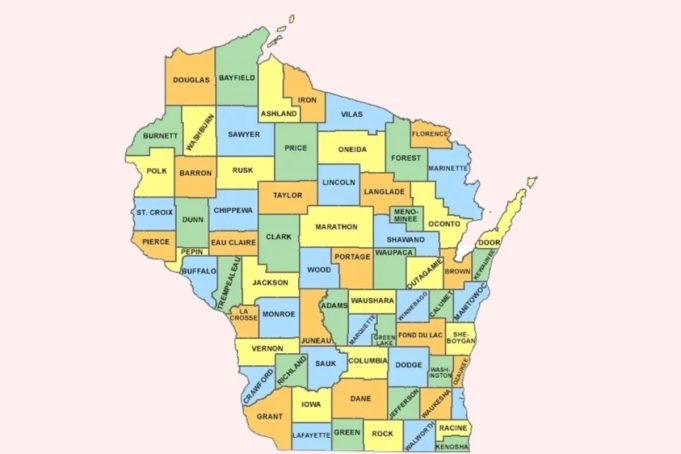The Central Time Zone in the United States of America (USA) is the Wisconsin Time Zone. The Central Standard Time (CST) of the United States is six hours behind Greenwich Mean Time (GMT-6). Wisconsin observes DST by advancing time by one hour to Central Daylight Time (CDT), which is five hours behind Greenwich Mean Time (GMT-5).
Wisconsin’s time is adjusted back by one hour to Central Standard Time (CST) or (GMT-6) following the summer months. This post also includes the phrases “What time is it in Wisconsin” and “current Wisconsin time.”
What Time Zone in Wisconsin?
Wisconsin is located in the Central Time Zone. There are no exceptions to the state’s uniform time zone for counties and cities. Wisconsin observes daylight savings time, so there are two distinct timepieces depending on the season.
-6).
- Central Standard Time (CST): – 6:00 UTC/GMT (behind)
- Central Daylight Time (CDT): – 5:00 UTC/GMT (behind)
All adjacent states observe the same time zone. Therefore, the time does not change when crossing into Minnesota, Iowa, Illinois, or Michigan. However, you will enter the Eastern Time zone as you travel further into Michigan.
Information About Wisconsin Time Zone
Wisconsin resides in the Central Time Zone, which observes Central Standard Time (CST) during standard time and Central Daylight Time (CDT) during daylight savings time. For more details, see the table below:
| Country | USA |
| Capital | Madison |
| State | Wisconsin |
| Wisconsin Time Zone Name | Central Daylight Time |
| Time Zone Abbreviations | CDT |
| Time Offset | UTC -5 |
| Daylight Saving Time (DST) (1 hour forward) | Sunday, March 12 2023 03:00 — Sunday, November 5 2023 01:00 |
| Daylight Saving Time Usage | Wisconsin does utilize Daylight Saving Time |
| Daylight Saving Start Date | Sunday, March 10, 2019, at 2:00 AM local time |
| Daylight Saving End Date | Sunday, November 3, 2019, at 2:00 AM local time |
| Latitude | 43.0389 |
| Longitude | -87.90647 |
Daylight Savings Time (DST) of Wisconsin
Wisconsin observes daylight saving time, as specified by the Uniform Time Act of 1966. During daylight savings, Central Standard Time (CST) is replaced by Central Daylight Time (CDT). It runs from the second Sunday in March to the first Sunday in November. The clock is advanced to 2:00 a.m. each March. to 3:00 a.m., resulting in a one-hour sleep loss.
In November, the clocks will be turned back an hour, from 3:00 a.m. to 2:00 a.m., providing you with an extra hour of sleep. Clocks “spring forward and fall back” is an easy way to recall the movement sequence. The whole length of daylight savings time is 34 weeks or around 65 percent of the year.
Coordinate a Scheduled Phone Conversation from Wisconsin to California
You can call a friend in California if you live in Wisconsin between 9:00 AM and 1:00 AM local time. This will occur between 7 AM and 11 PM their time, as California is two hours behind Wisconsin.
If you’re available at any time but want to reach someone at work in California, attempt between 11:00 AM and 7:00 PM (your time). During normal business hours, the best time to contact them is between 9 a.m. and 5 p.m.
| Wisconsin | California |
| 11:00 AM | 9:00 AM |
| 12:00 PM | 10:00 AM |
| 1:00 PM | 11:00 AM |
| 2:00 PM | 12:00 PM |
| 3:00 PM | 1:00 PM |
| 4:00 PM | 2:00 PM |
| 5:00 PM | 3:00 PM |
Conclusion
In conclusion, the Wisconsin Time Zone holds significant importance in the daily lives of its residents and plays a crucial role in synchronization with the broader national landscape. Positioned within the Central Time Zone, it serves as a consistent reference for scheduling, coordination, and communication across various sectors.
Whether it’s facilitating business operations, organizing transportation logistics, or simply keeping track of time, Wisconsinites rely on the stability and predictability provided by their time zone.
Moreover, the Wisconsin Time Zone fosters seamless connections with neighboring regions, contributing to unity and collaboration within the broader context of the United States. Overall, the Wisconsin Time Zone is an essential element of the state’s functionality and promotes efficient interactions within and beyond its borders.
Frequently Asked Questions (FAQs)
Is Wisconsin in two time zones?
Four counties on the western border of the Upper Peninsula are in a different time zone than the rest of Michigan. Wisconsin, which is in the Central Time Zone, shares borders with Dickinson, Gogebic, Iron, and Menominee counties.
Is Wisconsin Central Time or Eastern Time?
Central Time Zone.
Is Wisconsin in two time zones?
Four counties on the western border of the Upper Peninsula are in a different time zone than the rest of Michigan. Wisconsin, which is in the Central Time Zone, shares borders with Dickinson, Gogebic, Iron, and Menominee counties.
Did Wisconsin change the time?
Sunday, March 12, 2023, at 3:00:00 a.m. local daylight time. On March 12, 2023, sunrise and sunset occurred approximately one hour later than the day before. Evening was brighter than daytime.
How many time zones are in the USA?
With the Fall 2019 release of the National Transportation Atlas Database (NTAD), a new map of the nation’s time zones is included, depicting the geographical boundaries of four time zones in the continental United States and five additional time zones used in Alaska, Hawaii, and other U.S. territories.
How many hours of daylight does Wisconsin have?
14 hours and 0 minutes.














